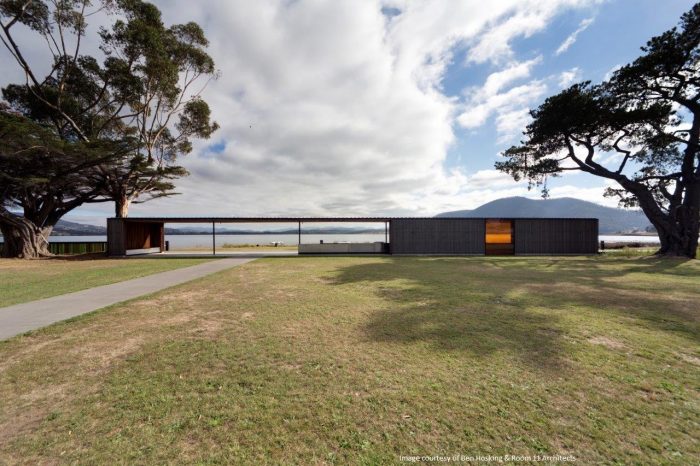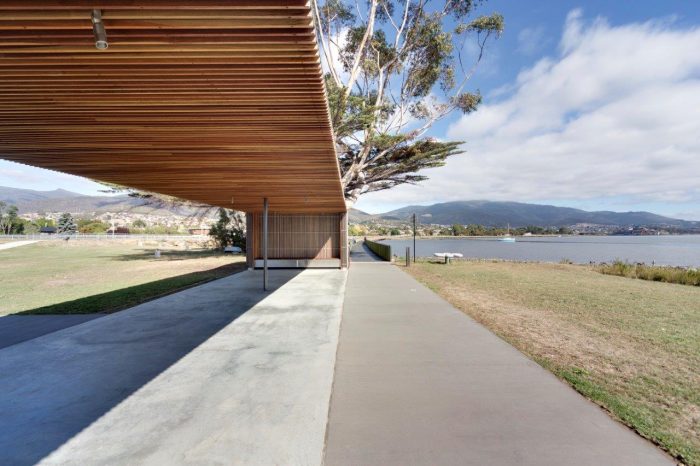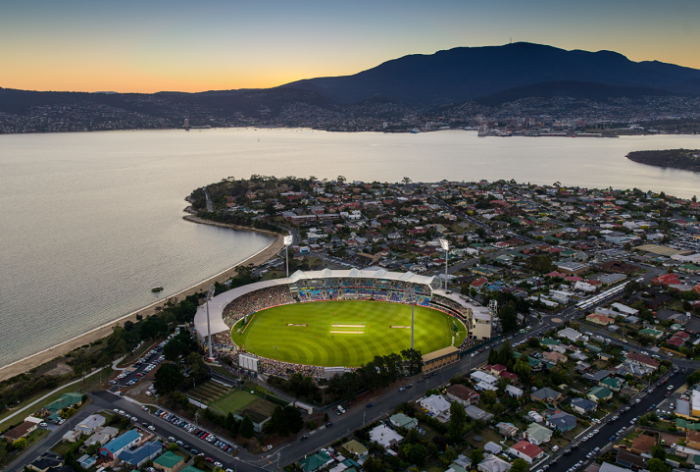Project Budget
$2.5M
Architect
Room 11 Architects
Client/Developer
Glenorchy City Council
Year
2013

Photos courtesy of Ben Hosking and Room 11 Architects Glenorchy City Council
The Glenorchy Arts and Sculpture Park (GASP) is path of public architecture running three kilometres along the River Derwent in Tasmania’s south. Consisting of two pavilions connected by a brightly calibrated boardwalk, the project design for GASP was the result of a limited architectural competition held in 2010. The winners, a local architecture firm called Room 11, aimed to transform the previously empty and littered Elwick Bay into a structural aesthetic frame for the surrounding mountainous landscapes. Running from the the Museum of Old and New Art in the North to Wilkinson point in the south, the project was constructed in two phases. The first phase saw the development of the GASP 1 pavilion and the connecting walkway. Consisting of timber, concrete, and a glass wall of stark orange, the first pavilion is the entry to the park. Explorations of colour and light follow the boardwalk around the bay creating harmonic contrasts with the beautiful foreshore and extensive mudflats.
The GASP 2 pavilion, situated on Wilkinson Point, forms a striking destination to the estuary boardwalk. A 40 metre long, 4 metre tall concrete wall shields walkers from the wind as they approach the final pavilion, creating an eerily silent commencement to the journey. The pavilion is host to a dramatic red glass wall cantilevering over the bay and bathing the bare concrete in a warm glow. Wind whistling through strategically placed holes along the walls of the pavilion forms acoustic elements within the pavilion, achieving a complete sensorial experience for the public. The GASP pavilions and the connecting boardwalk are a perfect example of how imaginative structural efforts are able to fulfil the creative vision of the architect and developer.

Glenorchy City Council

Glenorchy City Council

Photos courtesy of Ben Hosking and Room 11 Architects Glenorchy City Council

Photos courtesy of Ben Hosking and Room 11 Architects Glenorchy City Council



